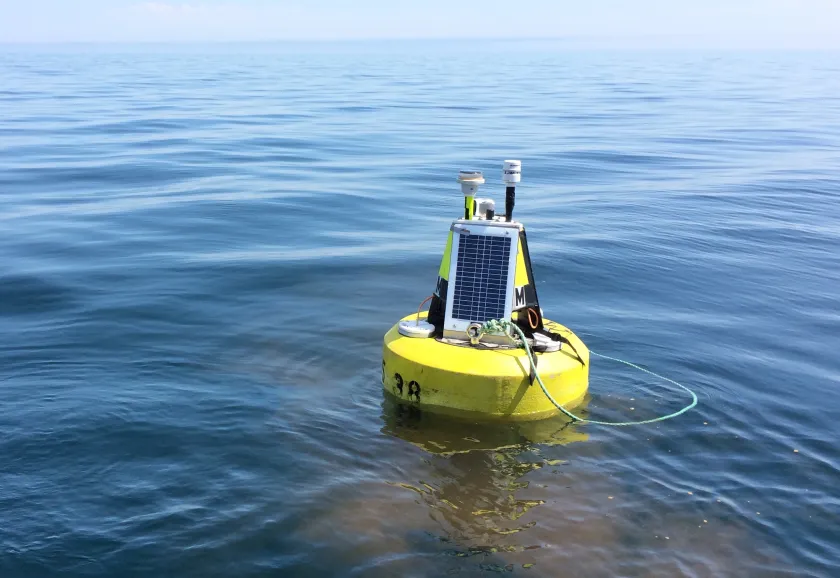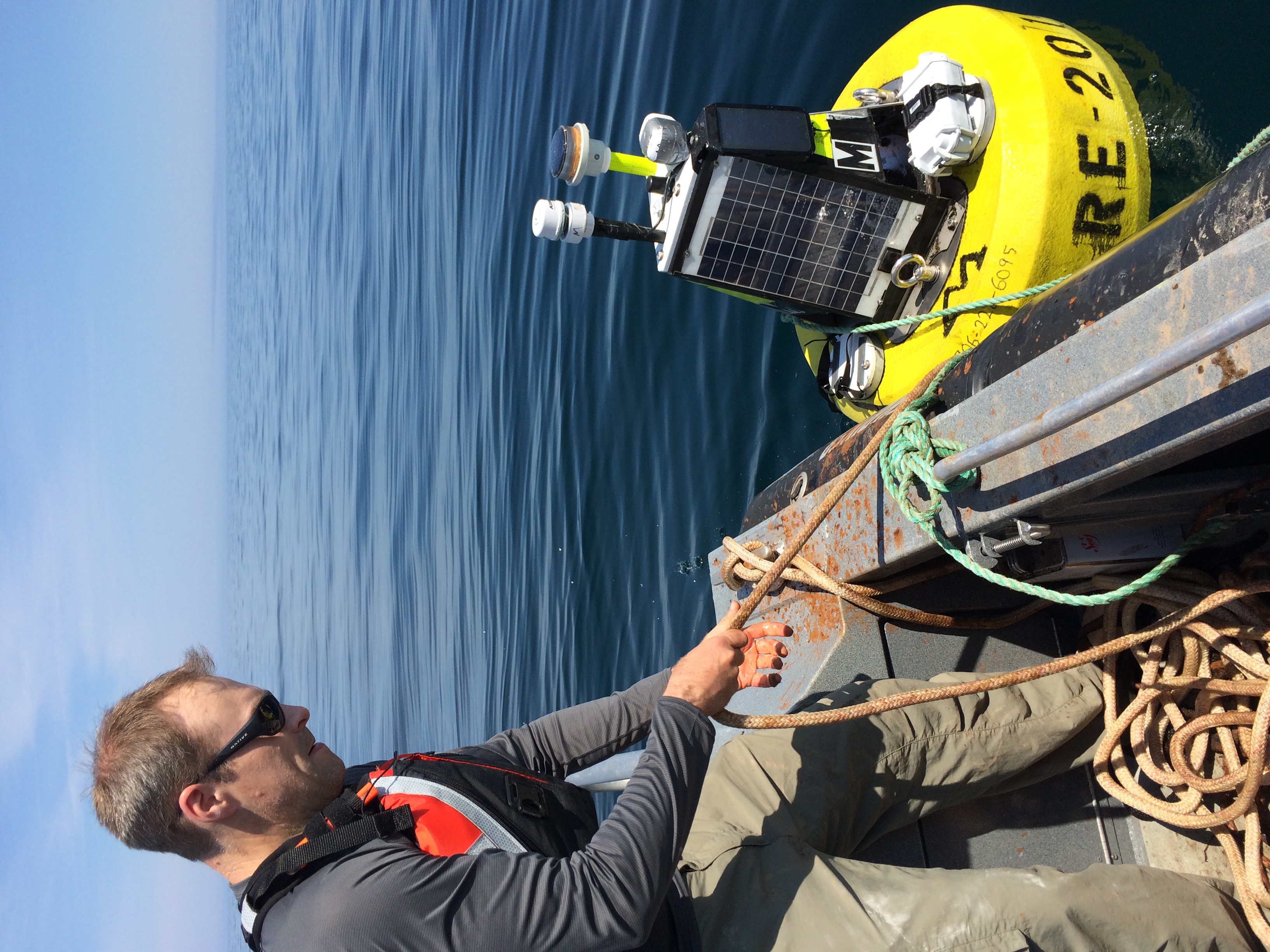Northern Michigan University continues to lead a collaborative effort to monitor data on weather and wave conditions at three locations along the southeastern shore of Lake Superior. The goal is to enhance safety among commercial and recreational users by generating real-time data that can aid in their decision-making. The first buoy was placed July 3 near Munising, 4.5 miles offshore. Two more will be deployed near Grand Marais and at Granite Island, about 12 miles north of Marquette.
“The buoys measure lake characteristics such as air and water temperature, wave height, wind speed and direction,” said Susy Ziegler, head of NMU's Earth, Environmental and Geographical Sciences Department. “Weather conditions on Lake Superior can change abruptly, so this information can help people prepare for safe outings on the water.”
Three community partners are assisting NMU in the effort. They include the Superior Watershed Partnership, whose staff handled the logistics of deploying the first buoy, and Pictured Rocks National Lakeshore, which committed one of its boats to today's launch. NMU alumnus and Granite Island owner Scott Holman also made his boat available.
“As a local Great Lakes organization, the SWP is proud to be a partner with the NMU buoy program,” said SWP Senior Planner Geri Grant. “These buoys provide crucial up-to-the-minute navigation information, as well as long-term climate information that we use to help plan more resilient coastal communities.”
“We are happy to partner with NMU, as well as our local business community, to support the deployment and management of this weather buoy,” said Pictured Rocks National Lakeshore Superintendent David Horne. “Our staff provides logistical support to deploy, maintain and retrieve the buoy to play our part in decreasing operational risk among our many partners and visitors. The buoy provides invaluable weather and wave condition assessments used by local mariners, businesses, guide services and boat tours to help ensure the safety of their crews and the visiting public.”
One tour company that relies heavily on the data generated is also the third community partner: Pictured Rocks Cruises, managed by NMU alumnus John Madigan.
“The Northern Michigan University weather buoy located on the Pictured Rocks National Lakeshore transmits wave height, wind speed and wind direction every 10 minutes,” Madigan said. “This critical information is used to determine if our boat and kayak tours can operate safely along the National Lakeshore. If the buoy information provided represents dangerous conditions, we will cancel our tours. This valuable navigation tool is critical to our business.”
NMU established the program in 2015 with a grant from the Great Lakes Observing System. It filled a void in consistent monitoring that existed along a particular span of Lake Superior, making it difficult for the National Weather Service to predict storms. The hope was that the buoy system would allow for greater preparedness for coastal weather events near the three locations.
On Oct. 24, 2017, regional observations of record-setting, 28.8-foot wave heights and hurricane-force wind gusts during a severe storm were generated by NMU-owned buoys at Granite Island and Munising, as well as the Stannard Rock weather station, owned by the SWP.


